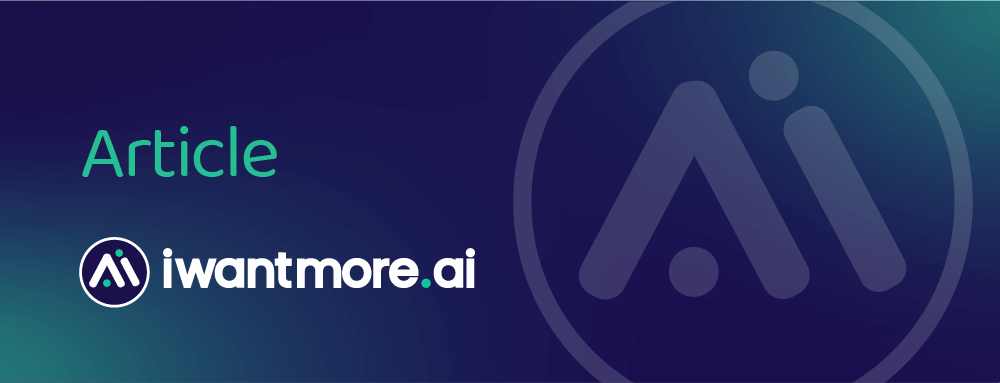
How the US, China and UK are approaching AI – and what it means for your business
Governments across the world are racing to develop and deploy AI, but their approaches couldn’t be more different. The United States, China and the United Kingdom have all released formal action plans in 2025 that give us a clear sense of their priorities, politics and philosophies on AI.
Here’s what they’re doing and what it tells us.
The US: move fast, export faster
In late July, the US released its ‘AI Action Plan’ backed by a set of executive orders. The focus was on speed, deregulation and global dominance. The US wants to build infrastructure fast, remove regulatory barriers and create a national AI export economy across the full stack, from chips to models.
The Biden-era frameworks that emphasised fairness and safety are being stripped back. The new rules explicitly remove references to DEI, climate and misinformation. AI procured by government must now be ‘truth-aligned’ and ‘ideologically neutral’, terms that critics say are politically charged.
There’s also a major push to scale data centres and hardware through tax breaks, waived environmental reviews and fast-track permitting. All of this is based around a fierce determination to beat China on AI, both economically and geopolitically.
What to watch: The US is betting on speed over caution. If you’re a UK firm working with American companies or models, expect rapid infrastructure rollouts and growing regulatory divergence.
China: self-sufficiency at all costs
China’s approach is state-led, long-term and rooted in technological independence. President Xi Jinping’s national AI strategy sets out to reduce reliance on US hardware and software while accelerating domestic capability in chips, models and governance.
There’s huge funding behind it: over $100 billion in combined public-private investment, with a particular focus on open-source models trained on local chips. China is also working to position itself as a global AI standard-setter, proposing international governance structures under its own leadership.
The plan emphasises controllability and safety, but always in the context of national sovereignty. There’s less talk of open AI ecosystems, more about national platforms and self-reliance.
What to watch: China’s model is centralised and well-resourced. The real test will be whether it can overcome hardware restrictions and geopolitical headwinds and whether its regulatory model gains international support.
The UK: measured, inclusive, and (relatively) pragmatic
The UK took a more measured step in January with its AI Opportunities Action Plan, followed by the Compute Roadmap in July. The emphasis is on building infrastructure (like the new Isambard supercomputer), expanding AI education, and integrating AI into public services such as the NHS.
Rather than rushing regulation, the UK has focused on creating safe environments for frontier model testing via its AI Safety Institute. It also declined to sign some international declarations seen as too vague or misaligned with UK interests.
There’s a clear attempt to strike a balance: support innovation, avoid heavy-handed rules, and deliver social benefit.
What about the EU AI Act?
Although the UK is no longer part of the EU, the EU AI Act still matters for many UK companies. If a UK-based business sells AI-enabled products or services into the EU, or uses AI systems that impact people in the EU, it will need to comply with the Act. That means UK firms must still classify their systems by risk level, adhere to transparency requirements, and potentially appoint an EU representative, similar to what happened post-GDPR. For many, this means designing AI governance with both UK and EU rules in mind.
What to watch: The UK’s approach is less headline-grabbing, but potentially more stable. For businesses, it means a supportive policy environment, growing compute capacity, increasing AI education and a clearer safety infrastructure than either the US or China currently offers.
Considerations for business
Each country is pulling the AI lever in a different direction:
- The US is scaling fast and looking outward. It’s ideal if you want access to cutting-edge models, but there are growing risks around policy volatility and environmental pushback.
- China is building inward and aiming for resilience. Western firms may find access limited, but Chinese tools are likely to become more globally relevant, especially in emerging markets.
- The UK is hedging. For now, it remains a relatively balanced environment for both AI development and adoption, especially if you’re in regulated sectors like health, education or finance.
For any organisation navigating this space, the key is to stay close to the evolving governance landscape, not just the technology itself. Who sets the rules may end up mattering more than who builds the tools.
Interested in more content like this? Sign up to our Newsletter here.
How we can help
At iwantmore.ai, we specialise in helping businesses bridge the AI divide turning curiosity into capability and capability into competitive advantage.
We work with organisations to:
- Assess AI readiness: Understand where you are today across people, processes, and platforms.
- Identify high-impact use cases: Through discovery workshops and hands-on collaboration, we surface the areas where AI and automation can add the most value specific to your business.
- Design and implement practical solutions: From AI agents to process automation, we help you build solutions that deliver real business outcomes not just tech demos.
Whether you’re just starting out or looking to take your existing efforts to the next level, we’re here to guide you every step of the way.
We understand you are busy but don’t get left behind. Start your AI journey with confidence. Contact us and let’s explore what’s possible for your business.
Other AI articles you may be interested in:

At iwantmore.ai, we help businesses navigate the world of AI. One of the persisting challenges we see is the perception by some people that using AI is 'cheating.' Despite AI’s proven advantages, some professionals still feel uneasy about embracing it leading to a culture where employees secretly use AI tools to avoid judgment.

Every company seems to want to use AI. According to Cisco’s second annual AI readiness report, 98% of executives felt an increased urgency to deliver on AI. Many businesses are already implementing it in some way, but based on the findings of the RAND report, more than 80% of AI projects fail.

Every few days, a new AI model seems to drop from one of the big AI companies. But as a normal person, how do you work out whether a new AI model is actually better than what you were using before? In this article we look at ways in which you can test out which model is most applicable for your business needs.

From boardrooms to marketing teams, leaders in businesses are being told they need AI to stay competitive. But amid the hype and noise, one crucial question often gets overlooked - what’s the actual return on investment (ROI)? Is it all worth the effort?

We take a look at the various ChatGPT modules and find out which ones best suited for what business tasks. We look at GPT-4o, GPT-4o Mini, GPT-4, OpenAI o1, OpenAI o1 Mini, OpenAI o1 Pro Mode, OpenAI o3 Mini and look at what they are best for, their purpose and how you access these models.

There’s still some confusion as to what an AI agent actually is. In many cases it’s probably still just simple automation with a fancy name. But at the more sophisticated end of the spectrum, these autonomous systems have the potential to change the way businesses operate.
iwantmore.ai – The AI consulting firm that helps you build a smarter business
Wherever you are with your AI implementation initiatives, we have a range of stand-alone AI quick start services to help you fast track the transformative benefits of AI across your business.



